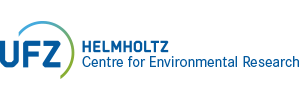Publication Details |
| Category | Text Publication |
| Reference Category | Journals |
| DOI | 10.1016/j.watres.2017.09.004 |
| Title (Primary) | Effect of design and operational conditions on the performance of subsurface flow treatment wetlands: Emerging organic contaminants as indicators |
| Author | Kahl, S.; Nivala, J.; van Afferden, M.; Müller, R.A.
|
| Source Titel | Water Research |
| Year | 2017 |
| Department | ANA; UBZ |
| Volume | 125 |
| Page From | 490 |
| Page To | 500 |
| Language | englisch |
| Supplements | https://ars.els-cdn.com/content/image/1-s2.0-S0043135417307376-mmc1.pdf |
| Keywords | Constructed wetland; Domestic wastewater; Intensification; Micropollutants; Reciprocating wetland; Seasonality |
| UFZ wide themes | RU2; |
| Abstract | Six pilot-scale subsurface flow treatment wetlands loaded with primary treated municipal wastewater were monitored over one year for classical wastewater parameters and a set of emerging organic compounds (EOCs) serving as process indicators for biodegradation: caffeine, ibuprofen, naproxen, benzotriazole, diclofenac, acesulfame, and carbamazepine. The wetland technologies investigated included conventional horizontal flow, unsaturated vertical flow (single and two-stage), horizontal flow with aeration, vertical flow with aeration, and reciprocating. Treatment efficiency for classical wastewater parameters and EOCs generally increased with increasing design complexity and dissolved oxygen concentrations. The two aerated wetlands and the two-stage vertical flow system showed the highest EOC removal, and the best performance in warm season and most robust performance in the cold season. These three systems performed better than the adjacent conventional WWTP with respect to EOC removal. Acesulfame was observed to be removed (>90%) by intensified wetland systems and with use of a tertiary treatment sand filter during the warm season. Elevated temperature and high oxygen content (aerobic conditions) proved beneficial for EOC removal. For EOCs of moderate to low biodegradability, the co-occurrence of aerobic conditions and low content of readily available carbon appears essential for efficient removal. Such conditions occurred in the aerated systems and with use of a tertiary treatment sand filter. |
| Persistent UFZ Identifier | https://www.ufz.de/index.php?en=20939&ufzPublicationIdentifier=19221 |
| Kahl, S., Nivala, J., van Afferden, M., Müller, R.A., Reemtsma, T. (2017): Effect of design and operational conditions on the performance of subsurface flow treatment wetlands: Emerging organic contaminants as indicators Water Res. 125 , 490 - 500 10.1016/j.watres.2017.09.004 |
|
